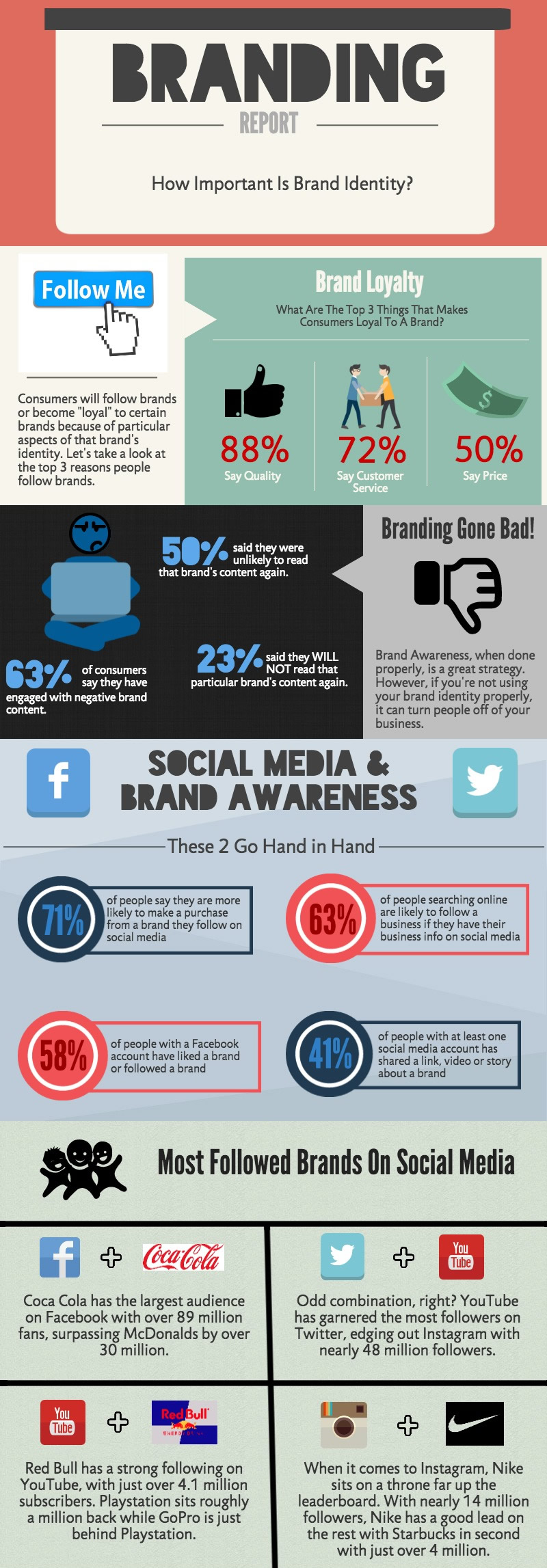Brand awareness, or as some call it, brand identity, is everywhere you look. Think about your typical start to a day. You might wake up, grab your coffee and take a quick look at the newspaper or your favorite news channel on TV.
You have a quick or long commute to work. On your way to work, you most likely pass billboards or even see advertising on cars or buses that pass by.
This is all an example of brand awareness.
Think about how many times you see the Nike swoosh in a month or a Pepsi or Coca-Cola logo. You probably get a certain sense or feel when you see this advertising.
That’s all part of creating a strong brand identity.
The Importance of Brand Awareness
Companies all over the world are creating themselves a brand identity, giving people a sense of who they are and what they represent. Your brand is the meaning behind your logo, your message and all your content.
For marketing, branding is typically the first step in the process.
Before you start delivering your message and content to your projected audience, you must create an image of your company, or brand yourself. Once you’ve established your brand, it’s time to spread the word through the various marketing channels.
Attempting to market yourself or your company without a brand identity will only confuse your potential customers or followers.
The ultimate goal with brand awareness, of course, is to be the first in line in the minds of consumers.
For example: when someone wants new basketball shoes, perhaps Nike is the first brand that comes to mind. Depending on the product or service you provide, being first in line is what you are looking to achieve when it comes to brand awareness.
Keep in mind, however, that brand awareness has its pitfalls as the internet has opened up outlets for consumers to openly talk about your brand, whether it be positive or negative. But don’t let this scare you away from putting your chin out there. Work on establishing a strong, POSITIVE brand identity, and make yourself available to the public.
If you can do this, your brand identity will take you a long way.
Take a look below at the following infographic to see how much brand awareness is being used.
Best Practices for Building Brand Awareness
- Consistent Branding: Ensure that your messaging, logo, and tone align across all channels to create a cohesive brand image.
- Engage Through Storytelling: Narratives that connect emotionally with consumers strengthen their association with your brand.
- Utilize Social Media: Social platforms are key for direct engagement and extending your brand’s reach to new audiences.
- Focus on Visual Identity: Iconic logos and recognizable colors help brands like Coca-Cola and Nike stand out and remain memorable.
- Leverage Influencers and Testimonials: Partnerships with trusted voices can amplify your message and enhance trust.
Key Takeaways from the Infographic on Brand Awareness
- Brand Loyalty Drivers:
- 88% of consumers say quality is the top factor for brand loyalty.
- 72% value customer service, making it a key differentiator.
- 50% prioritize price, highlighting the need for competitive pricing.
- Impact of Negative Content:
- 63% of consumers have engaged with negative brand content, showing the risks of poor branding.
- 50% are unlikely to read a brand’s content again if it’s unsatisfactory.
- 23% explicitly state they won’t revisit that brand’s content.
- Social Media’s Role in Brand Awareness:
- 71% of people are more likely to purchase from a brand they follow on social media.
- 63% follow businesses on social media to access important brand information.
- 41% of users share content about brands, showcasing the power of user-generated content.
- Most Followed Brands:
- Coca-Cola leads on Facebook with over 89 million followers, surpassing McDonald’s by 30 million.
- Red Bull dominates YouTube with over 4.1 million subscribers.
- Nike reigns on Instagram with nearly 14 million followers, leading Starbucks and others.
- Branding Gone Bad:
- Ineffective use of brand identity can turn potential customers away.
- Proper branding builds trust, while missteps can harm a business’s reputation.
Conclusion
Brand awareness is a crucial element of a successful business strategy.
It allows companies to establish their identity, create emotional connections with consumers, and position themselves as market leaders. By focusing on building a positive and consistent brand presence, businesses can drive loyalty and long-term success.
